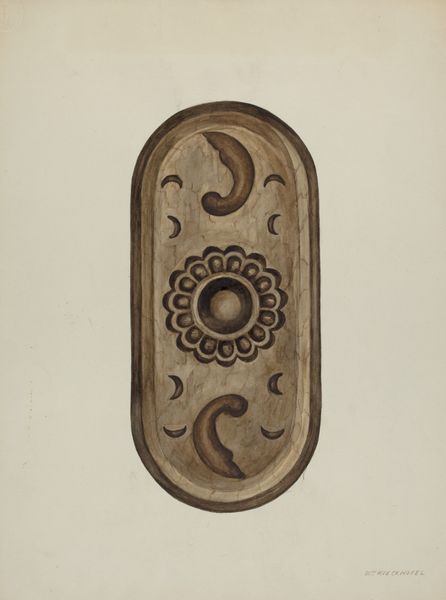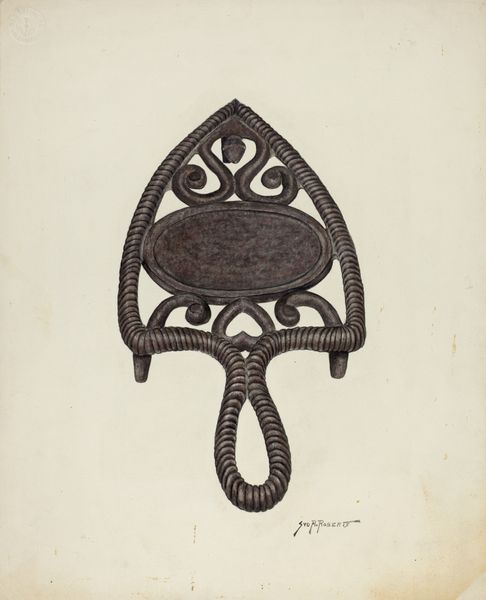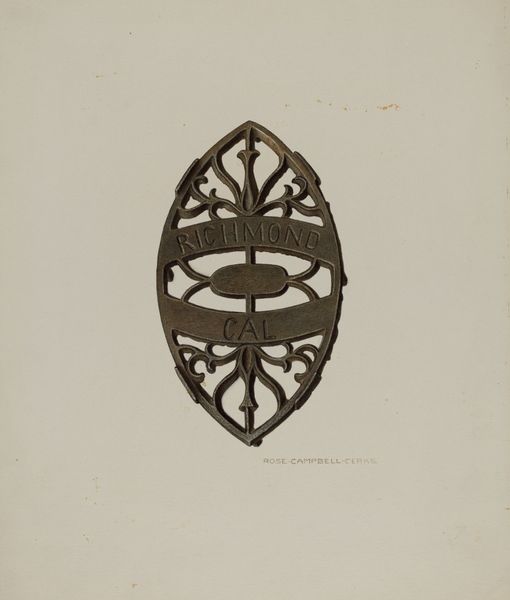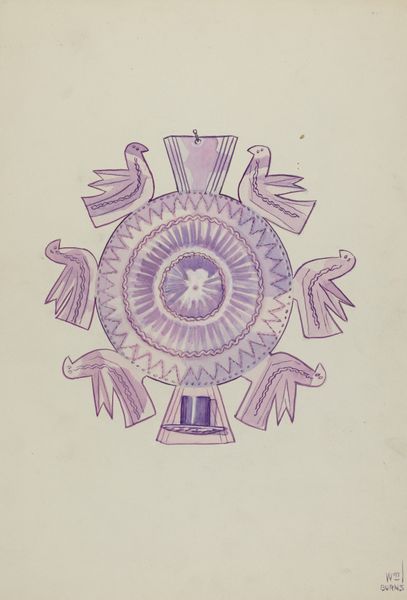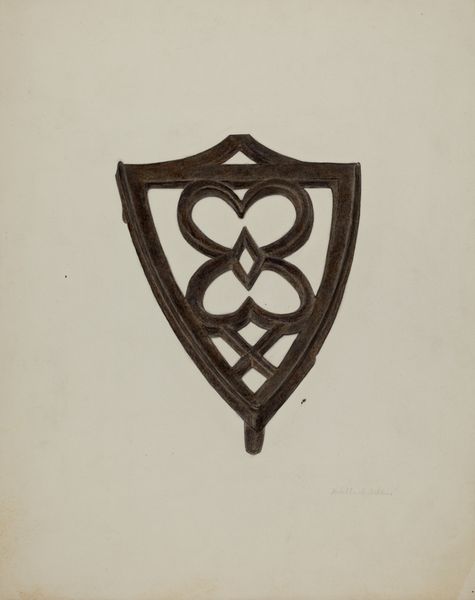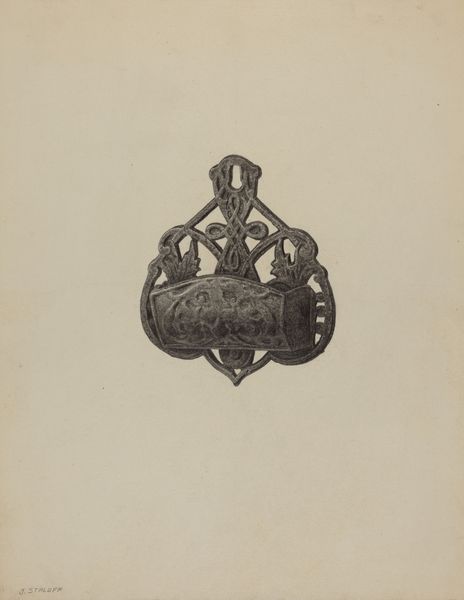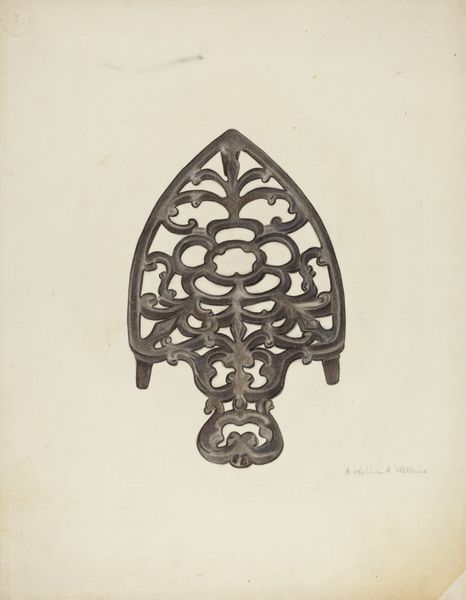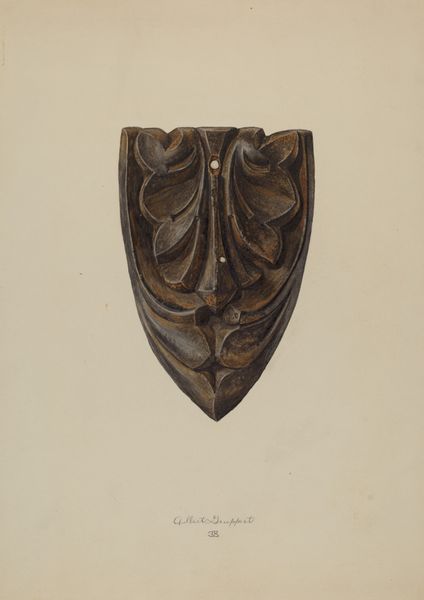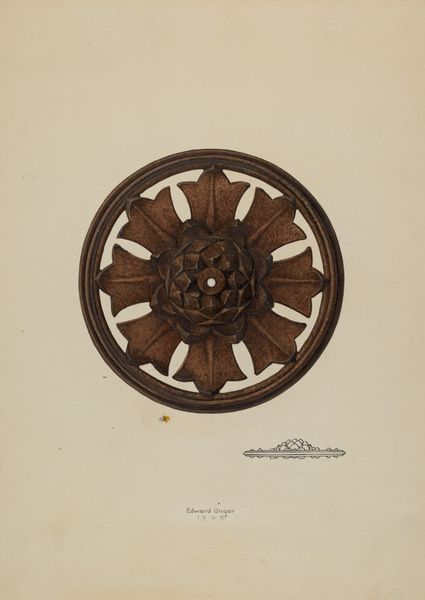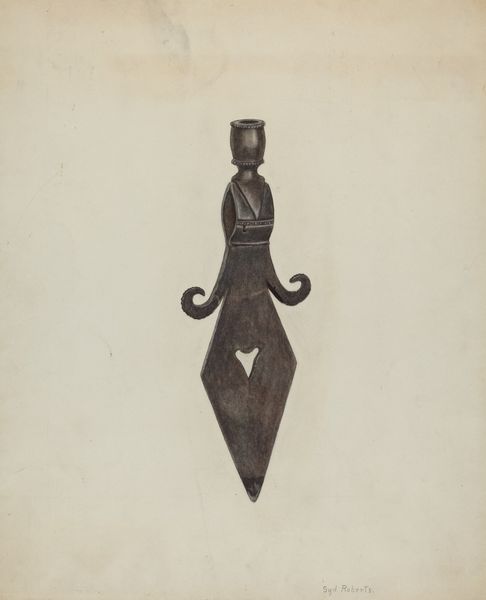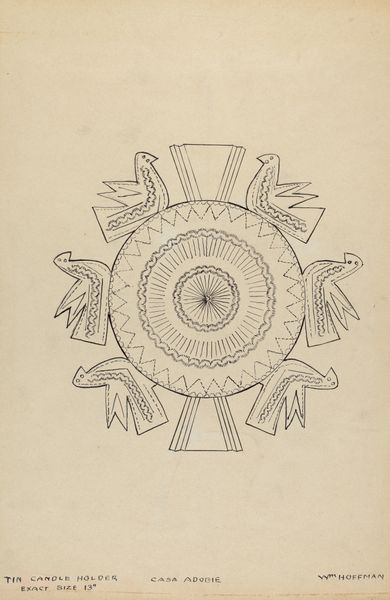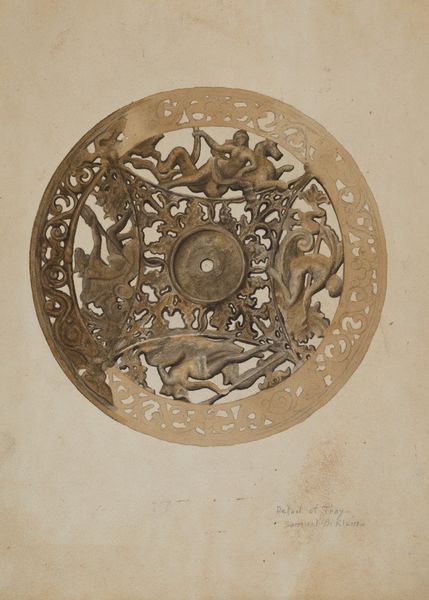
drawing
#
drawing
#
sculpture
#
geometric
#
decorative-art
#
modernism
Dimensions: overall: 35.7 x 26.7 cm (14 1/16 x 10 1/2 in.) Original IAD Object: 11 3/8" x 4 1/2" x 3/8"
Copyright: National Gallery of Art: CC0 1.0
Curator: The artwork before us, titled "Detail, Side of Confessional", was crafted in 1937 by William Kieckhofel. The medium appears to be drawing, focusing on a very detailed section. Editor: Immediately, I'm struck by this rigid yet ornate design—the sort of imposed piety reflected in so much of that era's church detailing. It projects a formal sense, even authoritarian. Curator: Indeed. Consider the craft of rendering these details in this medium. A study in prefabrication design, perhaps, hinting at mass production even within religious architecture. Editor: It does invite one to consider how religion uses design, like this side of a confessional. It becomes part of a mechanism influencing people to adhere to gendered roles and regulated beliefs in post-Depression America. Curator: Exactly! These patterns—this very aesthetic—functions as a form of soft power. Laboriously drawn, potentially, but envisioning modular construction for the spiritual marketplace. The decorative-art influence and geometric shapes demonstrate the modernist turn. Editor: And isn't that the heart of it? Religious architecture uses such symbolism to suggest power but is ultimately, created through design and through manual or mechanical effort, much like this careful study suggests. Curator: I agree. Kieckhofel's piece highlights the convergence of artistry and intent in unexpected architectural elements. Editor: Yes. This drawing brings to mind how belief becomes embodied—and how design is implicit to that process. Thank you for showing it to me.
Comments
No comments
Be the first to comment and join the conversation on the ultimate creative platform.

